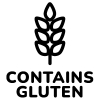Disclosure: This post may contain affiliate links, meaning I get a commission if you decide to make a purchase through my links, at no cost to you. Please read my disclosure for more information.
Hey there, theme park foodies!
We all know how exciting and fun a day at the theme park can be, but for those of us dealing with food allergies, it can also be a bit stressful. Don’t worry though because I’m here to share some quick tips for navigating theme park dining safely and deliciously with allergies. Let’s keep this short, shall we?
Disclaimer: I am not a medical provider nor am I your medical provider; this information is not medical advice. Please do your own due diligence when it comes to allergies within your group dynamic.
Know Your Allergies
Before you head out, it’s important that you understand everyone’s food allergies. You’ll be surprised who has an allergen in your group (fun fact, I’m allergic to peanuts and kiwis) and it’s good to know in the event of a food emergency and being well-informed doesn’t hurt either.
There are 8 major food allergens: peanuts, tree nuts, milk, eggs, wheat, soy, shellfish, and fish. I would also say sesame to make it 9, but there is some debate on whether this is considered major.




It’s important that you educate yourself on what kinds of allergens there are and the variety that are under that specific category. For example, if you have someone allergic to tree nuts, it doesn’t only mean cashews, walnuts, etc, it can also mean a potential allergy to apples as well.
My point is that there are so many nuances to allergies and there’s not a one-size fits all solution, so be careful. Know the common symptoms, reactions, and potential cross-contamination risks to make life a little easier in what can be a potentially difficult place for medical professionals to reach the person having the reaction.
What To Look Out For
If someone doesn’t mention their allergens (because sometimes allergens, especially for adults, can come later on in life), here are some symptoms (or potential reactions) to look out: nausea, hives, swelling, wheezing, trouble swallowing, anaphylaxis.
You can check out The Cleveland Clinic’s article for more information about this, too. And if you feel like this resource isn’t enough here are some others:
University of Nebraska – Food Allergy: International Regulatory Chart (international food allergen labeling regulations)
Keep an eye out and ensure that whoever is undergoing the allergic reaction is calm, has water nearby, and if they have an epipen, know how to use it beforehand. If it’s an adult, they should know how to use it, if it’s a child, you as the parent or guardian should know how to do this for them.
Plan Ahead and Research Park Policies
Every park has different food allergy policies (and most, but not all, even have food policy rules as well), so it’s best to familiarize yourself with the theme park of your choice’s policies ahead of time. Most parks have their own allergy-friendly menus and accommodations for guests with dietary restrictions. Take advantage of those resources available – either on the website or by reaching out to guest services for assistance prior to your visit.
By reaching out ahead of time the park can also allow for concessions if they don’t offer things for the person with allergens. This is especially true for those who are gluten free and vegan since there is typically a huge lack of food items at parks.
Anyway, by planning ahead and knowing what to expect, you and your family can minimize some stress and enjoy as much of your visit as possible.

Speaking of, if the park has (or doesn’t) what you need, a little bit of planning will go a looong way. Check out whatever menus that they do have available on their website, or ours if we have them, and ensure that there are enough options to choose from. However, if there isn’t, consider packing allergy-safe snacks from home to munch on throughout the day (important to reach out to the park beforehand so you have prior permission).
If you’re going to a larger park (e.g., Disney or Universal) those parks have a larger scope of allergy-safe foods compared to small parks (i.e., Lake Compounce, Six Flags). Use it to your advantage as they post their menus online and have their allergens listed. To be on the safe side I would call to ensure they have what you need to eliminate unnecessary wary.
Communicate with Staff
Your allergens (and those in your party) are your responsibility, the staff will not know how to help you unless you communicate and make it known. Before you eat something, especially at a sit-down, talk about your allergens clearly and plainly.
Chefs and servers are typically trained to accommodate dietary restrictions and can offer guidance on safe menu options. Ask questions about ingredients and food prep methods because of potential cross-contamination.
Seeking Out Allergy-Friendly Options
Many theme parks are making a more concerted effort of having options for guests with food allergies. While the degree of options varies based on which park, you can now find allergy menus at a lot of the larger operations and second-rate operators.
And if they’re not posted in their website, you can always email and ask for their menu or ask to bring in your own food so as not to starve throughout your stay. But just in case, here are some common allergen-friendly options you might find at theme parks:
- Gluten-Free: Look for gluten-free alternatives such as salads, grilled meats, and gluten-free buns for burgers and sandwiches. Many parks also offer gluten-free pizza and pasta options.
- Dairy-Free: Opt for dairy-free treats like fruit smoothies, sorbet, or dairy-free ice cream. Some parks may also offer dairy-free cheese for pizza or dairy-free milk alternatives for coffee and cereal.
- Nut-Free: Avoid dishes containing nuts and opt for nut-free snacks like popcorn, fresh fruit, or pretzels. Be cautious of cross-contamination and ask about nut-free preparation methods.
- Vegan/Vegetarian: This is probably the most difficult category behind gluten-free options to find in the parks. You can enjoy plant-based options such as veggie burgers, grilled vegetables, and tofu stir-fries. Many parks are hopping on the train to offer vegan desserts like coconut milk-based ice cream or vegan cupcakes.
Bring Your Own Allergy-Friendly Food
Not feeling comfortable with a teenager telling you what’s in a dish? Bring your own food for your own peace of mind. Remember to pack allergy-friendly / dietary-friendly condiments if you need them and some portable snacks, too.
It’s easier to have a better time when you’re feeling really comfortable about what you’re able to eat without a worry in the world. Plus, by bringing in your own food you avoid potential cross-contamination as well.
Recommended: Budget Friendly Lunch Hacks at Amusement Parks
Stay Informed and Vigilant
If it hasn’t been stressed enough throughout this post, it’s to stay informed.
You never know when something like an allergic reaction will ever come about and being aware of the kinds of allergens out there and the symptoms and reactions that come about from them is of extreme importance. Read labels, ask questions, and trust your instincts when it comes to choosing safe dining options.
It’s better to be safe than sorry after all, so speak up if you have any concerns or doubts about a particular dish or ingredient.

Stay Safe!
I get it … it can be a little overwhelming trying to keep your family and friends safe going out for the day, but it’s important to ask questions, get labels, and understand the dangers that are being posed to them as you go around. And even if no one in your group is being affected it may potentially come in handy if you see a stranger in danger.
I hope that this has helped you in any way.
And if you haven’t as of yet, please follow us on our other social media channels (YouTube, Instagram & Tik Tok – @themeparkbites) to stay up to date on food reviews. Thank you for allowing us to be your tasty theme park companion!
